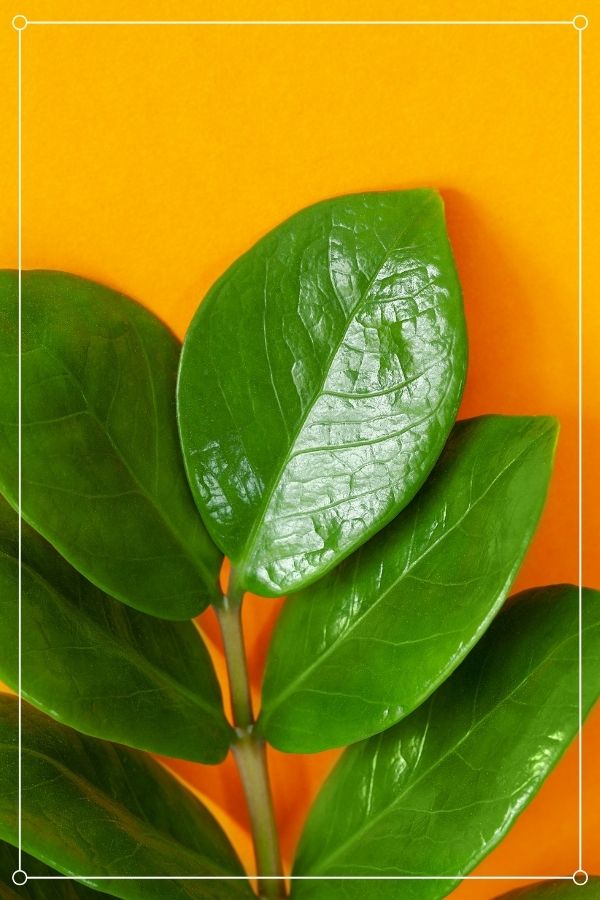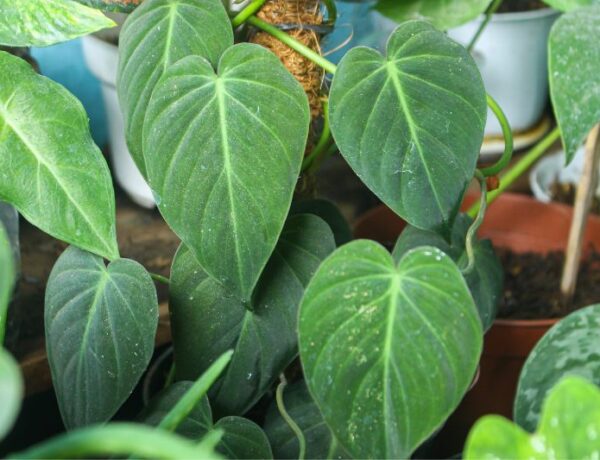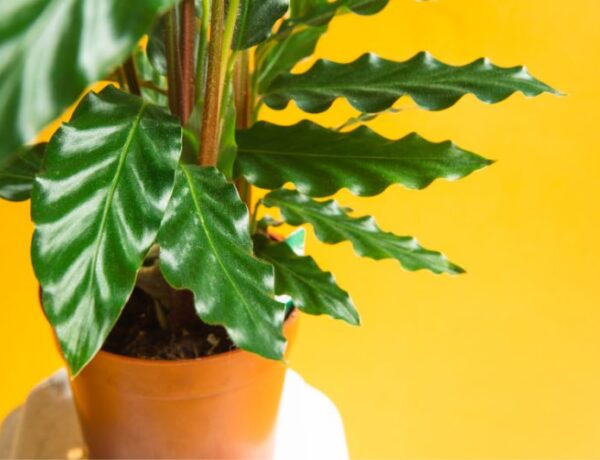You might be wondering: “What’s so special about the ZZ plant?” Well, this easy-going and attractive plant is perfect for both seasoned green thumbs and those who are just dipping their toes into the wonderful world of indoor gardening. With its shiny, deep green leaves and low-maintenance nature, the Zamioculcas zamiifolia is a perfect addition to any home or office.
So, whether you’re a busy bee who’s always on-the-go, or simply someone who’s been cursed with a not-so-green thumb, have no fear! This guide will walk you through everything you need to know to keep your ZZ plant happy, healthy, and looking like it belongs on the cover of a magazine.
Table of Contents
1. General Information & Taxonomy
Hailing from the eastern parts of Africa, the ZZ plant (Zamioculcas zamiifolia) has been a popular indoor plant choice since the late 90s, thanks to its unique appearance and hardy nature. It goes by a few other names, like Zanzibar Gem or Emerald Palm, but no matter what you call it, this plant is a true stunner.
The ZZ plant boasts a set of glossy, deep green leaves that grow on tall, graceful stems. One thing that sets the ZZ plant apart from other houseplants is its unique growth pattern. Instead of leaves unfurling from a central stem, they sprout from thick, potato-like rhizomes beneath the soil. These rhizomes store water and nutrients, which is why the ZZ plant can tolerate a bit of neglect and still thrive.
What’s even more fascinating is that the ZZ plant is an air-purifying champ! It’s been known to help remove toxins like xylene, toluene, and benzene from the air. So, not only will your ZZ plant look fabulous, but it’ll also help keep your indoor environment fresh and clean.
| Scientific name: | Zamioculcas zamiifolia |
| Common names: | ZZ Plant, Zanzibar Gem, Arum Fern, Aroid Palm, Welcome Plant |
| Native to: | Eastern Africa |
| Category: | Tropical perennial |
| Toxicity: | Toxic to humans and pets |
| Growth Rate: | Slow |
| Mature size: | 5 feet (120 cm) tall |
| Dormancy period: | During the winter months when there is less sunlight and the temperatures are cooler |
| Hardiness: | USDA hardiness zones 9 to 10 |
| Popular Cultivars: | ‘Dowon’, ‘Zamicro’, ‘Siesta’, ‘Luckywhi’, ‘Super Nova’, ‘Whipped Cream’, ‘Chameleon’ |


2. ZZ Plant Care & Growing Requirements
Let’s delve into the care tips that will make your ZZ plant the talk of the town among your plant-loving buddies. Before we get started, it’s worth mentioning that ZZ plants can grow up to 2-4 feet (60-120 cm) tall indoors, making them an eye-catching statement piece. If you’re on the hunt for more tall plants to grace your space, we’ve got an article for that too!
» Watering
The ZZ plant is a bit of a camel among houseplants, storing water in its rhizomes. That means you’ll want to let the soil dry out completely between waterings. Usually, watering can be done every 2-3 weeks. In low light conditions or during winter, this can be done even once per month.
Overwatering is the fastest way to send your ZZ plant to plant heaven, so when in doubt, hold off on the H2O.
» Light
While ZZ plants are pretty adaptable, they prefer bright, indirect light. Direct sunlight might cause those gorgeous leaves to yellow or scorch.
And for those who don’t have the luxury of a brightly lit apartment, ZZ plants can also tolerate lower light conditions. They’ll just grow a bit slower and may stretch towards the light source.
As a bonus, these adaptable plants can even thrive in a bathroom, as long as they’re not overwatered. Just remember to provide them with enough light and adjust your watering schedule to keep your ZZ plant happy in its unique environment.
» Soil
Your ZZ plant will appreciate well-draining soil that allows for ample aeration. A mix of potting soil, perlite, and a bit of pumice will do the trick. Be sure to choose a pot with drainage holes to prevent soggy roots.
Cacti or succulent soil mixes are also suitable for ZZ plants.
» Temperature
Comfortable room temperatures between 65-75°F (18-24°C) are perfect for your ZZ plant. Keep it away from cold drafts or hot air vents, as extreme temperature fluctuations can stress the plant.
» Humidity
ZZ plants aren’t too fussy about humidity. They can thrive in the average household environment (40-50% humidity). If you notice the tips of the leaves turning brown, though, consider giving your plant a little extra humidity with a pebble tray or a light misting.
» Fertilizer
While not a picky eater, your ZZ plant will enjoy a balanced, water-soluble fertilizer every couple of months during the growing season. Just remember, less is more. Over-fertilizing can lead to leggy growth and weak stems.
3. ZZ Plant Maintenance & Propagation
We’ll cover Repotting, Pruning, and Propagation in this section, ensuring your ZZ plant thrives and multiplies.
» Repotting
Zamioculcas plants are slow growers, so they don’t need to be repotted frequently. Generally, every 2-3 years will suffice. When it’s time to repot, choose a pot that’s just a couple of inches larger in diameter than the current one. Spring or early summer is the best time for repotting, allowing your ZZ plant to settle into its new home during the growing season.
A frequent issue with repotting your ZZ plant is the difficulty of getting it out of its current pot, especially if it’s a plastic one. If you’re in this situation, it’s best to carefully cut the pot vertically first.
» Pruning
Pruning a ZZ plant is a breeze! Simply trim away any yellowing or damaged leaves as they appear, using clean, sharp scissors. This will help your plant focus its energy on producing fresh, healthy foliage. If you notice any leaves that are excessively long or stretched due to low light conditions, feel free to trim them back as well.
» Propagation
You can propagate your ZZ plant by taking stem cuttings, leaf cuttings or by division. While division is the most successful method and can be easily done when you repot your plant, cuttings are a bit different, as they will grow new rhizomes that usually take up to a few months to develop.
- Stem cuttings → Choose a healthy stem with several leaves and cut it near the base using clean, sharp scissors. Allow the cut end to dry and callus over for a day or two to minimize the risk of rot. Once the end has callused, prepare a pot with a well-draining soil mix and insert the stem, making sure to bury at least one or two leaf nodes. Keep the soil slightly moist but not soggy, and place the pot in a warm, bright spot with indirect light. Patience is key, as it may take several weeks to a few months for roots to develop. As soon as you notice new growth, you can start treating your cutting like a mature ZZ plant.
- Leaf cuttings → Snip a healthy leaf close to the base and let it dry for a day or two. Then, simply insert the cut end into a pot filled with moist, well-draining soil mix. Be patient, as it can take a few months for roots to form. Once you see new growth, you’ll know you’ve successfully propagated your ZZ plant!
- Rhizome division → Gently remove the plant from its pot and carefully separate the rhizomes, ensuring each piece has at least one healthy stem and some roots attached. Plant the divided rhizomes into individual pots with fresh, well-draining soil, and treat them as you would a mature ZZ plant.
Since the success rate is not always 100% when it comes to stem or leaves cuttings, it is better to take multiple ones and try different methods at the same time.
4. Common issues While Growing a Zanzibar Gem
As easygoing as the ZZ plant may be, there are still a few common issues that can arise during its growth.
» Leaves Turning Yellow
Yellow leaves on your ZZ plant can be a sign of overwatering or poor drainage. To remedy this, cut back on your watering frequency and make sure your plant’s pot has adequate drainage holes. If the issue persists, consider repotting your plant in a well-draining soil mix and a pot with better drainage.
» Leaves Turning Brown
Brown leaves or leaf tips can indicate a few different problems. Low humidity can cause the tips to turn brown, so try increasing the humidity around your plant with a pebble tray or occasional misting. On the other hand, if entire leaves are turning brown, this could be a sign of underwatering or a root issue. Check the soil moisture and adjust your watering schedule accordingly.
5. Dealing with Diseases & Pests
While the ZZ plant is a hardy and resilient houseplant, it’s not immune to diseases and pests.
» Diseases
ZZ plants can occasionally be affected by diseases such as root rot and leaf spot. To prevent these issues, make sure you’re providing your plant with the right care, including proper watering, well-draining soil, and adequate light. It’s also important to keep the leaves clean and dust-free to allow for proper photosynthesis and air circulation.
If you notice any signs of disease, such as discolored or spotted leaves, remove the affected foliage and adjust your plant care routine accordingly.
» Pests
While ZZ plants aren’t particularly prone to pests, they can still fall victim to mealybugs, spider mites, or scale insects. Early detection is key, so routinely inspect your plant for any signs of pests, like tiny bugs, webbing, or sticky residue on leaves.
If you’re not sure how to identify common pests or how to deal with them, don’t worry! Our article about identifying common pests and dealing with them can help you on your plant care journey.
Conclusion
The ZZ plant is truly a gem among houseplants, with its striking appearance, air-purifying abilities, and low-maintenance nature. Whether you’re a seasoned plant enthusiast or a beginner looking to bring some greenery into your space, the Zamioculcas zamiifolia is a fantastic addition to any home or office.
Not only does the ZZ plant come in its classic form, but it also boasts a variety of stunning cultivars that add an extra touch of style to your space. Some of these cultivars feature darker foliage, like the ‘Dowon’ ZZ plant, which sports near-black leaves that add a dramatic flair to your indoor garden. With such variety, you’re sure to find a ZZ plant that perfectly complements your aesthetic.
To recap, the key to a happy and healthy ZZ plant lies in providing it with the right care, including proper watering, lighting, soil, temperature, and humidity. Keep an eye out for common issues like yellow or brown leaves, and address any diseases or pests as soon as possible. With a little love and attention, your ZZ plant will not only survive but thrive, becoming a stunning statement piece in your indoor jungle.






No Comments